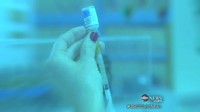Follow on from the Previous Link,
Arachnoiditis After Childbirth
Epidural injections for anesthesia in childbirth are also associated with arachnoiditis when a doctor inadvertently punctures the dura and a blood patch is used to close up the hole. Dura punctures happen about 4 percent of the time in childbirth.
"It is an irritant to nervous tissue -- even a mother's own blood -- and can produce inflammation and clumping of nerve roots," said Aldrete.
"The picture is painted to them that there are no problems," said Aldrete of the 1.6 million pregnant women who have epidurals for delivery.
"We should let the patient know what complications can occur," he said.
Many doctors tell patients that the worst outcome is that epidural steroid injections "may not work," rather than spelling out the risks.
Anesthesiologist Baker argues that overall, the risks of accidental dural puncture are small, according to medical literature -- about 0.3-1 percent. In obstetrical patients using a "blind" (without an x-ray) technique, the risk rises to 1 percent.
In one Japanese study of 277 patients, none of the 89 patients who received steroids in their spinal fluid because of dural puncture developed arachnoiditis.
Baker estimates at most, the odds of getting arachnoiditis are about 1 in 50,000.
Meningitis Outbreak: 7 People Confirmed Dead, 60 Others Being Treated Watch Video
Meningitis Outbreak: 5 Dead Watch Video
35 Meningitis Cases Blamed on Contaminated Steroid InjectionsWatch Video
Some studies have shown an association between arachnoiditis and exposure to herpes or cytomegalovirus, according to Bertelli.
Two-thirds who develop the condition end up losing bowel or bladder function and some end up bedridden, requiring powerful opiates.
Such was the case with Matt Clark, a 41-year-old father of two from Tennessee. Just hours after receiving an epidural steroid injections for back pain in 2003, parts of his intestines had dropped into his underwear because the epidural had relaxed the muscles in his gut.
Now, felled with arachnoiditis, he is disabled, in permanent pain with stabbing nerve pain in his feet and limbs and the sensation of invisible insects crawling on his skin.
"I am in so much pain," said Clark. "I have been robbed of so many things, and I am told that it is only a matter of time before I am in a wheelchair. I don't want to hurt my family but I truly would pick death over this disease."
He has even considered suicide. "But I can't do that to my boys," said Clark. "They look up to me and love me so much."
Clark compares the overuse of spinal injections to the lobotomies of an earlier century.
"Everyone thought they were a godsend," he said. "Epidural steroid injections are the same thing. Everyone thinks they are wonderful, but they are not. I am going to have this for the rest of my life. It's horrible."
Bertelli, whose condition has stabilized with medications, said she feels the same way. She is still in pain and has spent thousands of dollars on treatments.
"I would not wish this on anyone," she said. "It's been the worst experience of my life and so hard, especially on my loved ones. I am living with the pain, but it hits you and you try not to cry and maintain a smile -- it's important with little kids.
- Questions to ask your doctor before receiving an epidural steroid injection [From Dr. Ray M. Baker]:
- What is the provider's training? Fellowship trained? Weekend course? Mentored?
- Do they use fluoroscopy on all injections?
- Have they had major complication(s)? How many?
- What percentage of their practice is dedicated to interventions?
- Do they occasionally perform spinal injections as a small part of a busy radiology, psychiatry, surgical or pain practice, or are spinal interventions a larger part of their practice?
 Matt Clark says only his family has prevented him from killing himself because of constant pain from arachnoiditis.
Matt Clark says only his family has prevented him from killing himself because of constant pain from arachnoiditis.

